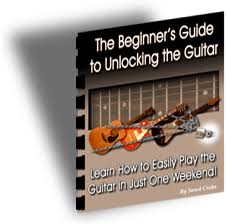Piano Lamps, What To Think About When Purchasing.
The purpose of any piano lamp is to provide the best possible light so that the pianist can flawlessly play the music without difficulty in order to avoid eye strain. Because pianos differ in height and style there are lamps designed specifically for certain types of pianos. In order to decide on the right piano light for your piano, you must first know exactly what type and size of piano you have.
Upright pianos have vertical strings and are available in many different heights. Spinet, Large Spinet, Console and Full Upright are all types of Upright Pianos. Spinets come in heights ranging from 36-38. Large Spinets are from 40-42, Consoles are usually 45-46 and Full Uprights are the tallest and range from 50-56 in height.
In a Grand Piano the strings are horizontal. There are three types of Grand Pianos classified by size. The Baby Grand is the smallest of the grand pianos and measures anywhere from 4 " 5. These are typically found where space is a concern or in studios as practice pianos. The Standard Grand Piano can range in size from 5 -7. This is the size most people think of when they use the term Grand Piano. The longest in length is the Concert Grand Piano. It is available between 7 and 9. Concert Grands are used for what the name implies large settings and concerts and are the first choice for performing artists around the world. The longer the piano means the bigger the sound board and thus the bigger the sound resonation.
When choosing the proper lamp for your piano it is wisest to stick to those lamps designated specifically for your type of piano. If this is not easily determined, then follow these general guidelines: A Spinet piano lamp may be used for any upright piano but an Upright Piano Lamp is too short for most spinet pianos. Lamps listed as Grand Piano Lamps are usually too big for a Spinet or an Upright Piano. Sheet music is typically 12 wide and a well positioned light will be about 3-6 inches above the music.
The light should be pointed towards the music and away from the players eyes to avoid glare. Overhead room lighting is never good enough light for playing music for any length of time and may cause headaches and eye strain.Piano Lamps do double duty as desk lamps because they are so good for reading (as long as they are not the clip on variety) and so are well worth the cost. Because these lights offer a way to direct the light specifically onto the reading material (goose neck lamps work especially well for this) they are purchased by many non-piano-playing folk as well. The piano lamps ability to avoid glare (due to the construction of the lamp shade and the special treatment of the inside of the shade) make this ideal for reading and seeing notes on a page so that the piano player can effortlessly flow from page to page easily without eyestrain. - 18780
Upright pianos have vertical strings and are available in many different heights. Spinet, Large Spinet, Console and Full Upright are all types of Upright Pianos. Spinets come in heights ranging from 36-38. Large Spinets are from 40-42, Consoles are usually 45-46 and Full Uprights are the tallest and range from 50-56 in height.
In a Grand Piano the strings are horizontal. There are three types of Grand Pianos classified by size. The Baby Grand is the smallest of the grand pianos and measures anywhere from 4 " 5. These are typically found where space is a concern or in studios as practice pianos. The Standard Grand Piano can range in size from 5 -7. This is the size most people think of when they use the term Grand Piano. The longest in length is the Concert Grand Piano. It is available between 7 and 9. Concert Grands are used for what the name implies large settings and concerts and are the first choice for performing artists around the world. The longer the piano means the bigger the sound board and thus the bigger the sound resonation.
When choosing the proper lamp for your piano it is wisest to stick to those lamps designated specifically for your type of piano. If this is not easily determined, then follow these general guidelines: A Spinet piano lamp may be used for any upright piano but an Upright Piano Lamp is too short for most spinet pianos. Lamps listed as Grand Piano Lamps are usually too big for a Spinet or an Upright Piano. Sheet music is typically 12 wide and a well positioned light will be about 3-6 inches above the music.
The light should be pointed towards the music and away from the players eyes to avoid glare. Overhead room lighting is never good enough light for playing music for any length of time and may cause headaches and eye strain.Piano Lamps do double duty as desk lamps because they are so good for reading (as long as they are not the clip on variety) and so are well worth the cost. Because these lights offer a way to direct the light specifically onto the reading material (goose neck lamps work especially well for this) they are purchased by many non-piano-playing folk as well. The piano lamps ability to avoid glare (due to the construction of the lamp shade and the special treatment of the inside of the shade) make this ideal for reading and seeing notes on a page so that the piano player can effortlessly flow from page to page easily without eyestrain. - 18780
About the Author:
Chuck R Stewart recently purchased a piano lamp and a small piano light for his theater's two pianos.




